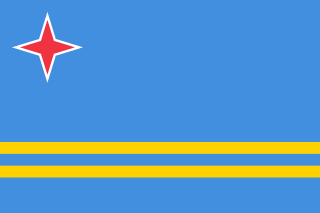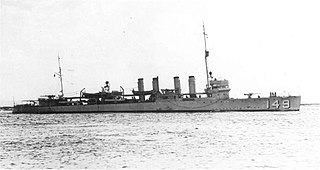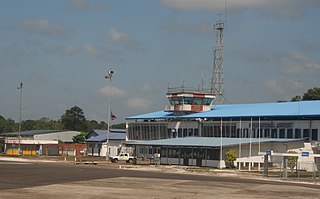Related Research Articles

Aruba, officially the Country of Aruba, is a constituent country within the Kingdom of the Netherlands, situated in the southern Caribbean Sea. Aruba is located approximately 29 kilometres (18 mi) north of the Venezuelan peninsula of Paraguaná and 80 kilometres (50 mi) northwest of Curaçao. In 1986, it became a constituent country within the Kingdom of the Netherlands and acquired the formal name the Country of Aruba.

The Netherlands Antilles, also known as the Dutch Antilles, was a constituent Caribbean country of the Kingdom of the Netherlands consisting of the islands of Saba, Sint Eustatius, and Sint Maarten in the Lesser Antilles, and Aruba, Curaçao, and Bonaire in the Leeward Antilles. The country came into being in 1954 as the autonomous successor of the Dutch colony of Curaçao and Dependencies, and it was dissolved in 2010, when like Aruba in 1986, Sint Maarten and Curaçao gained status of constituent countries within the Kingdom of the Netherlands, and Saba, Sint Eustatius, and Bonaire gained status of special municipality of Netherlands as the Caribbean Netherlands. The neighboring Dutch colony of Surinam in continental South America, did not become part of the Netherlands Antilles but became a separate autonomous country in 1954. All the territories that belonged to the Netherlands Antilles remain part of the kingdom today, although the legal status of each differs. As a group they are still commonly called the Dutch Caribbean, regardless of their legal status. People from this former territory continue to be called Antilleans in the Netherlands.

Curaçao, officially the Country of Curaçao, is a Lesser Antilles island in the southern Caribbean Sea, specifically the Dutch Caribbean region, about 65 km (40 mi) north of Venezuela. It is a constituent country of the Kingdom of the Netherlands.

Bonaire is a Caribbean island in the Leeward Antilles, and is a special municipality of the Netherlands. Its capital is the port of Kralendijk, on the west (leeward) coast of the island. Aruba, Bonaire and Curaçao form the ABC islands, 80 km off the coast of Venezuela. The islands have an arid climate that attracts visitors seeking warm, sunny weather all year round, and they lie outside the Main Development Region for tropical cyclones. Bonaire is a popular snorkeling and scuba diving destination because of its multiple shore diving sites, shipwrecks and easy access to the island's fringing reefs.

Queen Beatrix International Airport, , is an international airport located in Oranjestad, in the Dutch Caribbean island of Aruba. It has flight services to the United States, Canada, several countries in the Caribbean, the northern coastal countries of South America, as well as some parts of Europe, notably the Netherlands. It is named after Beatrix of the Netherlands, who was Queen of the Netherlands from 1980 to 2013.

USS Barney (DD–149) was a Wickes-class destroyer in the United States Navy during World War II, later redesignated AG-113. She was the second ship named for Commodore Joshua Barney.

USS Simpson (DD-221/APD-27/AG-97) was a Clemson-class destroyer in the United States Navy during World War II. She was the first ship named for Rear Admiral Edward Simpson.

Johan Adolf Pengel International Airport, also known as Paramaribo-Zanderij International Airport, and locally referred to simply as JAP, is an airport located in the town of Zanderij and hub for airline carrier Surinam Airways, 45 kilometres (28 mi) south of Paramaribo. It is the larger of Suriname's two international airports, the other being Zorg en Hoop with scheduled flights to Guyana, and is operated by Airport Management, Ltd./ NV Luchthavenbeheer.

Curaçao International Airport, also known as Hato International Airport, is the only airport for the Dutch Caribbean island of Curaçao, in the southern Caribbean Sea.

USS Vixen (PG-53) was a gunboat of the United States Navy during World War II, in which it served as a flagship to the Commanders of the Atlantic Fleet.
USS Nuthatch (AM-60) was an Auk-class minesweeper in the United States Navy.

Trans Caribbean Airways (TCA) was an irregular air carrier until 1957, when it was certificated by the Civil Aeronautics Board (CAB) as an international air carrier to fly from New York City to San Juan, Puerto Rico. TCA thereafter operated as a small scheduled airline specializing in flying from New York to the Caribbean, adding a small number of additional routes over time until it was purchased by American Airlines in 1971.

RKV F.C. Sithoc is a football club based in Willemstad, Curaçao, that competes in Curaçao League. It was founded on March 7, 1942.
The Scout and Guide movement in the Dutch Caribbean is served by

The Battle of the Caribbean refers to a naval campaign waged during World War II that was part of the Battle of the Atlantic, from 1941 to 1945. German U-boats and Italian submarines attempted to disrupt the Allied supply of oil and other material. They sank shipping in the Caribbean Sea and the Gulf of Mexico and attacked coastal targets in the Antilles. Improved Allied anti-submarine warfare eventually drove the Axis submarines out of the Caribbean region.
USS PC-568 was a PC-461-class submarine chaser built for the United States Navy during World War II. The ship was later named USS Altus (PC-568) in honor of Altus, Oklahoma, but never saw any active service under that name. After she was struck from the Naval Vessel Register in 1963, she was transferred to the United States Air Force.

The Kingdom of the Netherlands, commonly known simply as the Netherlands, is a sovereign state consisting of a collection of constituent territories united under the monarch of the Netherlands, who functions as head of state. The realm is not a federation; it is a unitary monarchy with its largest subdivision, the eponymous Netherlands, predominantly located in Northwestern Europe and with several smaller island territories located in the Caribbean.

The Curaçao national football team represents Curaçao in international football, and is controlled by the Curaçao Football Federation.

The Colony of Curaçao and Dependencies was a Dutch colony in the Caribbean Sea from 1634 until 1828 and from 1845 until 1954. Between 1936 and 1948, the area was officially known as the Territory of Curaçao, and after 1948 as the Netherlands Antilles. With the proclamation of the Charter for the Kingdom of the Netherlands on 15 December 1954, the Netherlands Antilles attained equal status with the Netherlands proper and Suriname in the new Kingdom of the Netherlands.
Sonia Magdalena Cuales was a Curaçaoan feminist activist and writer. Her work in the United Nations system and with various advocacy groups focused on the intersection of women's rights and development across the Caribbean.
References
- ↑ "Anglo-American Committee For Caribbean Appointed". St. Petersburg Times. 1942-03-10. Retrieved 2009-09-26.
- ↑ Bough, James A. (1949). "The Caribbean Commission". International Organization. 3 (4): 643–655. doi:10.1017/S0020818300014922. ISSN 1531-5088.
- ↑ Herbert Corkran, Patterns of International Cooperation in the Caribbean, 1942-1969 (Dallas, 1979)